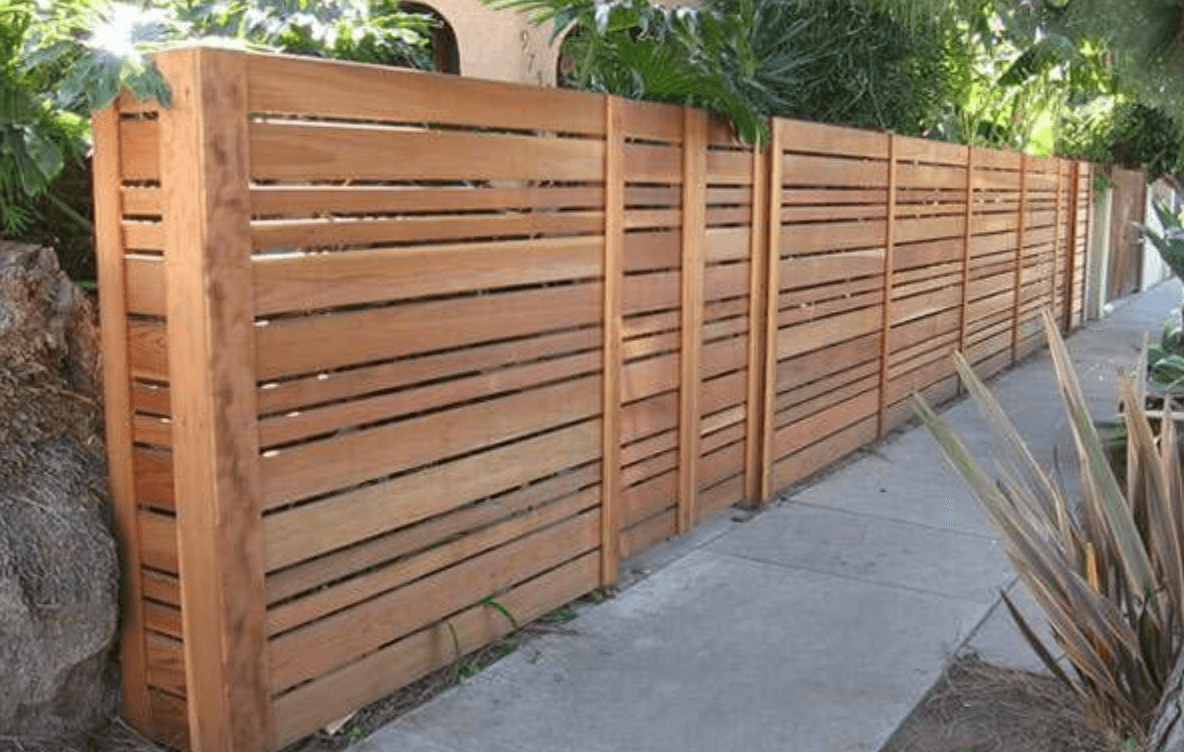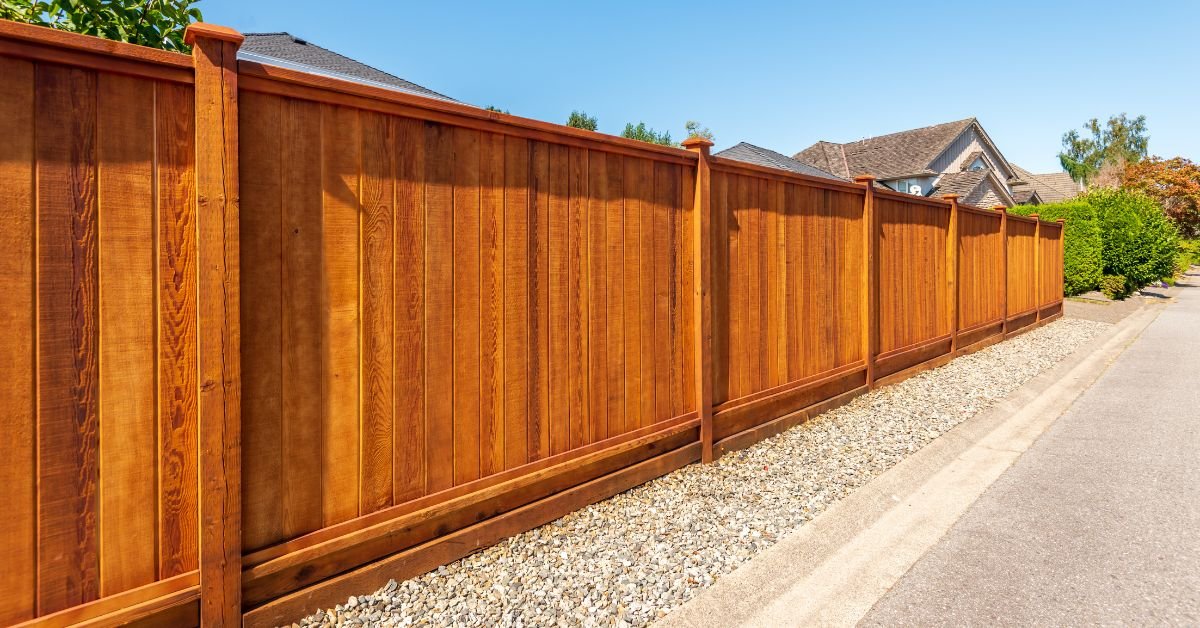All Categories
Featured
When it comes to keeping a wood fence, house owners usually encounter the decision of whether to paint or discolor. Both alternatives have their benefits and drawbacks, and the selection ultimately relies on your visual choices, the sort of timber, and just how much upkeep you're eager to devote to. Right here's a thorough comparison to assist you make an informed decision.
The Fundamentals of Paint and Staining
Paint entails covering the timber with an opaque layer of shade. It gives complete insurance coverage, concealing the timber grain while using outstanding protection versus environmental components.
Staining permeates the timber, improving its natural appeal while adding a safety layer. Depending upon the type, stains can range from clear to strong, permitting varying levels of timber grain visibility.
Pros and Cons of Painting
Pros:
Wide Array of Colors: Paint deals limitless shade alternatives, allowing you to match your fencing to your home's outside or personal style.
Longer Enduring: Premium exterior paint can last up to 5-7 years, calling for much less regular reapplication.
Superior Defense: Paint types a thick, strong obstacle against dampness, UV rays, and bugs.
Disadvantages:
Peeling and Cracking: Over time, paint can break or peel off, particularly in areas with extreme climate conditions.
Hides Natural Wood Charm: If you like the natural grain of timber, paint might not be the most effective choice.
Higher Maintenance: Repainting calls for removing the old paint, which can be labor-intensive.
![]()
Advantages And Disadvantages of Discoloration
Pros:
Natural Look: Spots maintain and improve the natural elegance of the timber, making it optimal for high-quality wood like cedar or redwood.
Simpler to Reapply: Unlike paint, spots don't crack or peel. Reapplying stain normally requires less surface area prep work.
Versatile Complete Choices: Discolorations been available in clear, semi-transparent, and solid selections, using various degrees of protection.
Disadvantages:
![]()
Shorter Life Expectancy: Stains, particularly clear and semi-transparent ones, might require reapplication every 2-3 years.
Restricted Shade Choices: While discolorations use natural tones, they lack the broad color scheme readily available with paint.
Less Safety: Stains permeate the wood yet don't give as thick a barrier as paint, making them a little much less protective against severe climate.
Variables to Take Into Consideration
Visual Preferences: If you desire lively colors and total insurance coverage, paint is the means to go. For a natural and rustic look, go with tarnish.
Wood Kind: Top notch timbers with beautiful grains take advantage of discoloration, while lower-grade timbers can be repainted for a sleek appearance.
![]()
Environment: In moist or damp climates, paint's thicker barrier may offer better defense. In modest or dry climates, spots can suffice.
Maintenance Dedication: Paint involves much less constant reapplication but more initiative during touch-ups. Staining calls for routine maintenance but is much easier to take care of.
Last Ideas
Both paint and staining can successfully shield and beautify your wooden fencing. The most effective alternative relies on your priorities, whether they favor appearances, sturdiness, or simplicity of upkeep. By recognizing the advantages and drawbacks of each, you can pick the finish that straightens with your requirements and ensures your fence remains a standout function of your property for years ahead.
The Fundamentals of Paint and Staining
Paint entails covering the timber with an opaque layer of shade. It gives complete insurance coverage, concealing the timber grain while using outstanding protection versus environmental components.
Staining permeates the timber, improving its natural appeal while adding a safety layer. Depending upon the type, stains can range from clear to strong, permitting varying levels of timber grain visibility.
Pros and Cons of Painting
Pros:
Wide Array of Colors: Paint deals limitless shade alternatives, allowing you to match your fencing to your home's outside or personal style.
Longer Enduring: Premium exterior paint can last up to 5-7 years, calling for much less regular reapplication.
Superior Defense: Paint types a thick, strong obstacle against dampness, UV rays, and bugs.
Disadvantages:
Peeling and Cracking: Over time, paint can break or peel off, particularly in areas with extreme climate conditions.
Hides Natural Wood Charm: If you like the natural grain of timber, paint might not be the most effective choice.
Higher Maintenance: Repainting calls for removing the old paint, which can be labor-intensive.

Advantages And Disadvantages of Discoloration
Pros:
Natural Look: Spots maintain and improve the natural elegance of the timber, making it optimal for high-quality wood like cedar or redwood.
Simpler to Reapply: Unlike paint, spots don't crack or peel. Reapplying stain normally requires less surface area prep work.
Versatile Complete Choices: Discolorations been available in clear, semi-transparent, and solid selections, using various degrees of protection.
Disadvantages:

Shorter Life Expectancy: Stains, particularly clear and semi-transparent ones, might require reapplication every 2-3 years.
Restricted Shade Choices: While discolorations use natural tones, they lack the broad color scheme readily available with paint.
Less Safety: Stains permeate the wood yet don't give as thick a barrier as paint, making them a little much less protective against severe climate.
Variables to Take Into Consideration
Visual Preferences: If you desire lively colors and total insurance coverage, paint is the means to go. For a natural and rustic look, go with tarnish.
Wood Kind: Top notch timbers with beautiful grains take advantage of discoloration, while lower-grade timbers can be repainted for a sleek appearance.

Environment: In moist or damp climates, paint's thicker barrier may offer better defense. In modest or dry climates, spots can suffice.
Maintenance Dedication: Paint involves much less constant reapplication but more initiative during touch-ups. Staining calls for routine maintenance but is much easier to take care of.
Last Ideas
Both paint and staining can successfully shield and beautify your wooden fencing. The most effective alternative relies on your priorities, whether they favor appearances, sturdiness, or simplicity of upkeep. By recognizing the advantages and drawbacks of each, you can pick the finish that straightens with your requirements and ensures your fence remains a standout function of your property for years ahead.
Latest Posts
Depend On Bath Fitter Metro Detroit for Your Next Restroom Renovation
Published Apr 18, 25
1 min read
The Roadway to Financial Liberty Begins Here
Published Apr 18, 25
1 min read
Transform Your Home with Long Lasting Hardwood Flooring from Carpet Interiors Floor & Home
Published Apr 17, 25
1 min read
More
Latest Posts
Depend On Bath Fitter Metro Detroit for Your Next Restroom Renovation
Published Apr 18, 25
1 min read
The Roadway to Financial Liberty Begins Here
Published Apr 18, 25
1 min read
Transform Your Home with Long Lasting Hardwood Flooring from Carpet Interiors Floor & Home
Published Apr 17, 25
1 min read